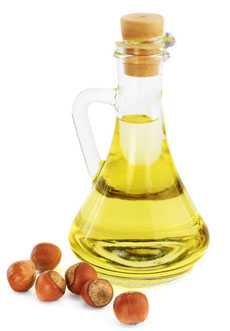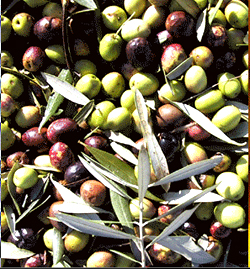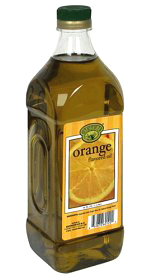

Nut oils like this hazelnut oil are expensive but very rich in flavor. They be “diluted” with olive oil or vegetable oil and still have big impact. Photo © Vizafoto | Fotolia.
November 2006
Last Updated October 2012
|
 |
Try A Different Type Of Cooking Oil
Page 4: Types Of Cooking Oil ~ L To O
Looking for a different type of cooking oil? This is Page 4 of a six page glossary. Click on the black links below to visit other pages. And check out all of our delicious food glossaries.
LEMON OIL
A golden colored oil with a citrus aroma that is produced from the skin of the lemon. As edible oil, it is commonly used as a salad oil or as a food ingredient. Some lemon oils are mixed with olive oil to produce a combined oil for flavoring and dipping of foods.
MACADAMIA NUT OIL
An oil from the cold pressing of macadamia nuts. The oil is highly nutritious with the highest level of heart-healthy, monounsaturated fat of any edible oil. It also has an exact balance of Omega-3 and Omega-6 fatty acids. The high level of antioxidants slows rancidity and allows the oil to be kept for up to two years without refrigeration. In addition, the oil has a high smoke point, which makes it a good choice for sautéing and frying. While closely associated with Hawaii, the tree is native to Australia, which leads the world in production of the nut and the oil. Hawaii, Guatemala, Kenya and South Africa are other major producers. This versatile oil can be used in salads, as a condiment oil or in cooking. See our review of Brookfarm macadamia nut oil.
MARGARINE
Margarine was created during a World War II butter shortage, then perpetuated as an alternative to high-fat, high-cholesterol butter. It can be used as a substitute for butter in many dishes, including as a spread or for pan-frying or sautéing. However, when margarine was created it was loaded with trans fat, a substance that we now know raises bad cholesterol, lowers good cholesterol and points to a number of other health issues. Most brands of margarine are made with hydrogenated oils: hydrogenation is a process that solidifies oil, and this process produces trans fat. So, while margarine is lower in fat than most oils and butter and a source of vitamin E, consider the other side.
MUSTARD OIL
Mustard oil is obtained from pressing Indian mustard seeds, which are hotter than Mediterranean mustard seeds. The oil is hot and flavorful, and thus used sparingly. When the oil reaches the smoking point, a taste change occurs that results in a smoother mustard flavor, which will not overpower the food while it is being cooked. Thus, when cooking with mustard oil, the oil should be brought to its smoking point before food is cooked in it. It will stay fresh for 6 months or more stored in the refrigerator. In addition to Indian recipes, mustard oil is delicious in salad dressings, stir-fry, and marinades for meat and fish.
NUT OIL
Nut oils are very rich, and often combined with other oils to dilute their richness while retaining their flavor. They are much more expensive than vegetable oils, and can be found in small bottles. Most come from France, where they are prized in cuisine. After the bottle is opened, the oil should be stored in the refrigerator to prevent it from becoming rancid. If refrigeration causes the oil to solidify, it can be restored to a liquid state by leaving it at room temperature for an hour or two or by microwaving for a few seconds. Nut oils are very popular in French cooking. See our reviews of La Tourangelle nut oils and Brookfarm macadamia nut oil.
|
OLIVE OIL
Oil pressed from the fruit of the olive tree. The first pressing yields extra virgin olive oil; other grades include virgin olive oil, olive oil. Olive oil is not a high-heat cooking oil; the smoke point is low, and heating at high temperatures evaporates the alcohols and esters that give the oil its taste. That’s why one should never cook with extra-virgin or virgin olive oil, but simply that designated “olive oil”; and then, its best use is for sautéing meats and vegetables at lower temperatures, or for baking. However, olive oil is at its best when consumed uncooked, such as in salad dressings or dipping sauces. See our complete Olive Oil Glossary.
|
|

Freshly harvested olives. Photo courtesy OliveOil.com. |
 ORANGE OIL ORANGE OIL
A golden colored oil with a citrus aroma that is produced from the skin of the orange. It is commonly used as a marinade and a salad dressing or in baking and basting. It can be mixed with olive oil to produce a combined flavoring and dipping oil.
Continue To Page 5: Terms From P To R
Go To The Article Index Above

|




